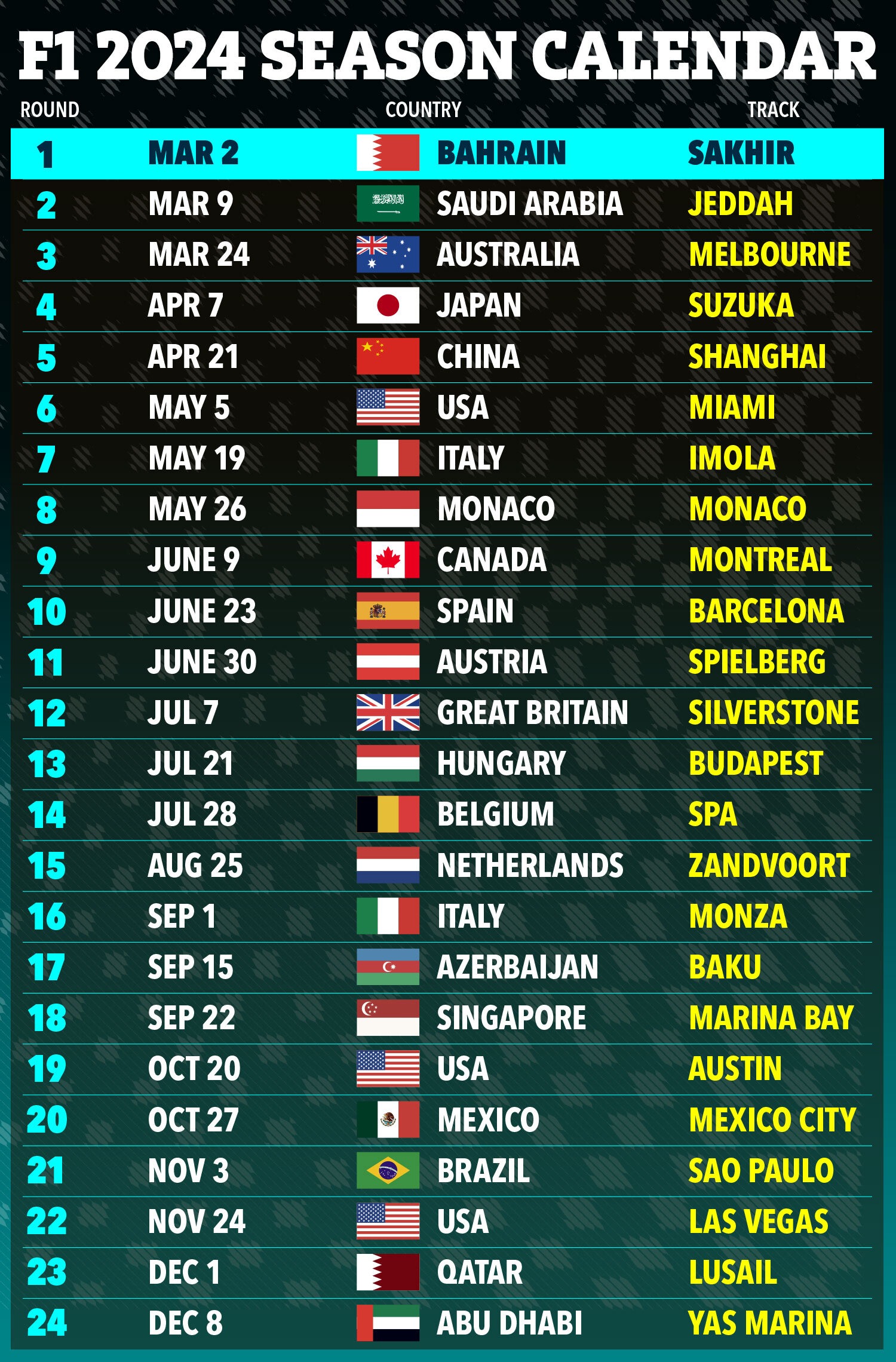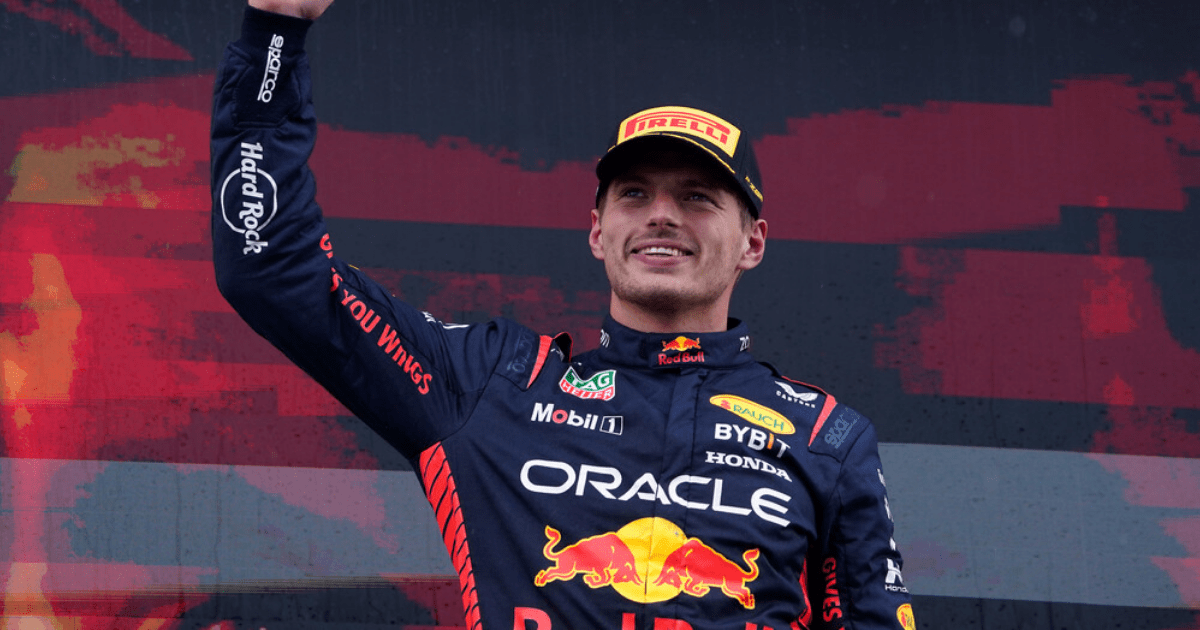Max Verstappen made history with a third consecutive championship win in 2023, dominating the competition with 19 podium finishes out of 23 races. This season, all eyes are on Lewis Hamilton as he aims to dethrone Verstappen and secure his record-equalling eighth championship title.
Exciting Season Ahead
The 2024 F1 season is set to kick off this weekend in Bahrain, promising a thrilling lineup of races across the globe. The calendar is packed with iconic events, including the Australian Grand Prix, Belgian Grand Prix, and the United States Grand Prix.
Verstappen's Streak vs. Hamilton's Comeback
Verstappen's impressive winning streak has left fans in awe, but Hamilton is determined to put an end to it. Despite finishing third in the previous season, Hamilton's drive and skill make him a formidable opponent as he seeks to reclaim the top spot on the podium.
Key Races to Watch
With races spanning from Australia to Abu Dhabi, the 2024 F1 calendar is packed with excitement and fierce competition. From the iconic Monaco Grand Prix to the high-speed action of the Italian Grand Prix, fans can expect edge-of-the-seat action throughout the season.

Frequently Asked Questions
What steps does Formula 1 take to be more environmentally friendly?
Formula 1 adopts several measures in order to become more environmentally friendly. One of the major initiatives is the transition to biofuels. The goal is to achieve a carbon footprint net zero by 2030. The sport is researching advanced sustainable fuel technologies to reduce greenhouse gas emissions. We are implementing initiatives to reduce emissions through logistics, including carbon offsets and eco-friendly travel methods. F1 is also working with partners to improve the recyclability of components and reduce waste.
What is intended by the halo system introduced to Formula 1?
The halo feature is a Formula 1 safety feature that was designed to protect drivers’ heads from debris. The halo is a titanium device that sits over the cockpit. It can withstand significant forces and has been credited for saving lives and preventing injuries since its introduction. The halo has become an integrated part of modern Formula 1 car design, illustrating the sport’s commitment to driver safety.
What are the ways in which F1 racing strategies are influenced by technology?
F1 racing strategies are heavily reliant on technology, including real-time data analytics, predictive modeling and simulation. Teams use a wide range of data to make strategic decisions about pit stops, tire selection, and fuel management. This includes everything from tire performance metrics to forecasts. Advanced software and machine learning models can simulate race scenarios to develop the most effective race strategy, and during the race, teams adapt these strategies based on live data and the evolving race conditions.
How has Formula 1’s DRS system improved overtaking ability?
Drag Reduction System (DRS), a Formula 1 feature, reduces aerodynamic resistance to allow for better overtaking. It opens the flap of the rear wing under certain circumstances, usually when a vehicle is within one second from the car ahead. This action reduces downforce for a short time, increasing speed and making passing easier. DRS overcomes the aerodynamic turbulence that can be caused by the lead vehicle, making overtaking difficult.
Statistics
- The halo device introduced into Formula 1 in 2018 is designed to withstand the equivalent weight of a London double-decker bus.
- Modern Formula 1 car chassis are required to withstand a frontal crash test with a peak deceleration of no more than 25 g.
- Formula 1’s research into sustainable fuel aims to create a 100% sustainable fuel for use in F1 engines by the mid-2020s.
- Since the hybrid power units were introduced in 2014, thermal efficiency has increased from around 29% to surpass 50%, a remarkable figure compared to standard road car engines.
- A Formula 1 steering wheel is one of the most complex components of the car, costing up to $50,000 to produce.
- In 2021, Formula 1 announced its plan to have a net-zero carbon footprint by 2030, which includes the cars, on-track activities, and the rest of the operations.
- Formula 1 tires lose weight during a race due to wear and degradation, with up to 0.5 kg shed from each tire.
- Computational fluid dynamics simulations are capable of calculating around 300 million mesh points to simulate airflow around a Formula 1 car.
External Links
mercedesamgf1.com
pirelli.com
engadget.com
formula1.com
renaultsport.com
sauber-group.com
racecar-engineering.com
wired.co.uk
How To
How to Understand Formula 1 Aerodynamics
To grasp the concept of Formula 1 aerodynamics, start by studying the role of air flow over the car’s body. F1 vehicles are designed for maximum downforce with minimal drag to increase speed. The aerodynamic shape of the bodywork and front and rear wings is carefully designed to optimize air flow. Study the DRS’s (Drag Reduction System), as well as how the teams adapt their aerodynamics in different conditions.

